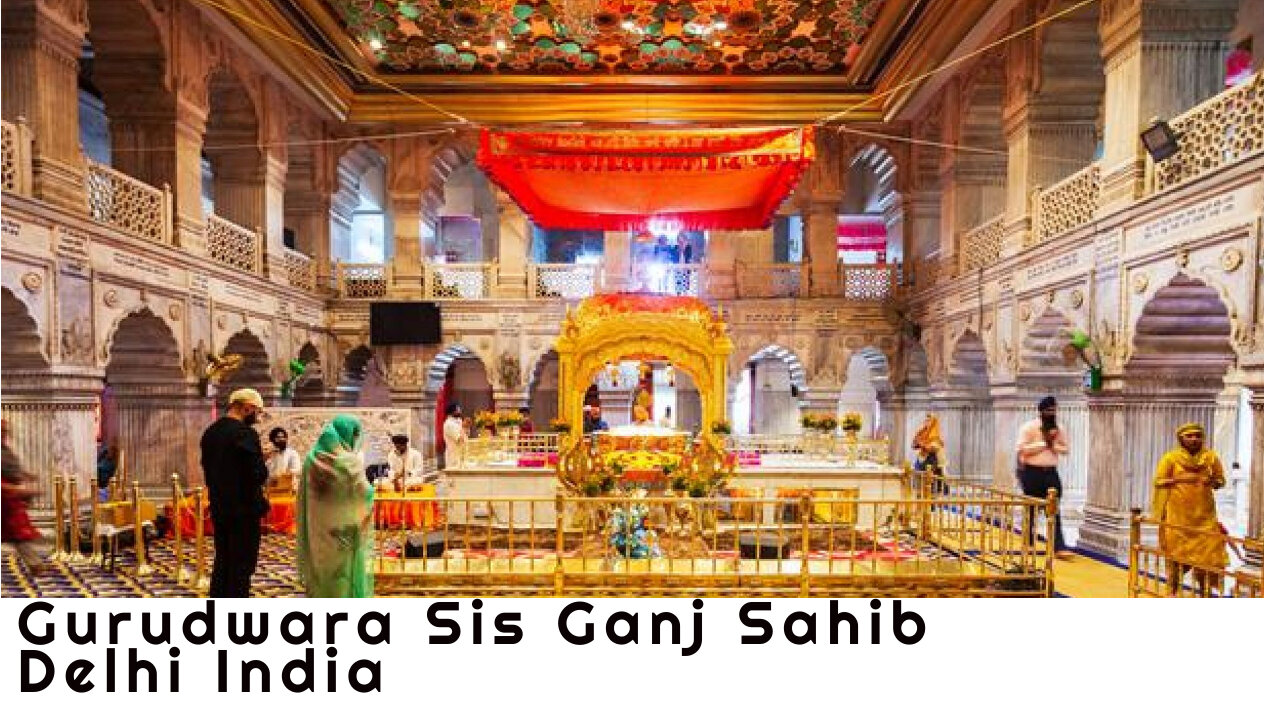Premium Only Content

Gurudwara Sis Ganj Sahib, Delhi, India
one of the nine historical Gurdwaras in Delhi. It was first constructed in 1783 as a small shrine by Baghel Singh Dhaliwal to commemorate the martyrdom site of the ninth Sikh Guru, Guru Tegh Bahadur, and was probably expanded after the Indian Rebellion of 1857 or after the Partition of India. Before its construction, the Mughal Kotwali (Police Station and Jail) was situated here.[1][2][3] After the Indian Rebellion of 1857, the Mughal Kotwali was demolished by the British. and the land was given to the Sikhs because the Sikh Maharaja of Patiala and other Sikh soldiers helped the British to defeat the Mughal soldiers by providing large numbers of ammunition and soldiers.[4] Its current building was made by Rai Bahadur Narain Singh a contractor who build most of the roads in Lutyens New Delhi construction under British Rule. Situated in Chandni Chowk in Old Delhi, it marks the site where the ninth Sikh Guru was beheaded on the orders of the Mughal emperor Aurangzeb on 11 November 1675 for saving Kashmiri pandits who refused to convert to Islam. The Sikh regiment of the Indian army salutes the Sis Ganj Gurudwara after saluting the president of India since 1979, the only instance of saluting twice in the Republic Day parade by a regiment of the Indian army.
The ninth Sikh Guru, Guru Tegh Bahadur was beheaded here on 11 November 1675 on the orders of the Mughal Emperor Aurangzeb, when Guru Tegh Bahadur protested against the forceful conversion of Kashmiri Pandits and dharmic people to Islam. However, before their body could be quartered and exposed to public view, it was stolen under the cover of darkness by one of his disciples, Lakhi Shah Vanjara who, then burnt his house to cremate Guru's body; today, at this site stands Gurdwara Rakab Ganj Sahib.
-
 3:07:17
3:07:17
Alex Zedra
8 hours agoLIVE! New Game | Exorcism!??
23.6K2 -
 6:00:06
6:00:06
SpartakusLIVE
11 hours agoThe Conqueror of Corona || Delta Force LATER
60.3K1 -
 2:17:30
2:17:30
barstoolsports
14 hours ago$250k Winner Revealed With Final Votes And Reunion | Surviving Barstool S4 Finale
118K8 -
 2:05:49
2:05:49
Kim Iversen
11 hours agoTikTok Ban BACKFIRES: Millions Flee To New App Showing The REAL China
109K150 -
 1:35:12
1:35:12
Glenn Greenwald
13 hours agoCNN And Jake Tapper In Deep Trouble In Defamation Lawsuit: With Jonathan Turley; TikTok Ban, Trump's China Policy, And More With Arnaud Bertrand | SYSTEM UPDATE SHOW #390
103K71 -
 12:24
12:24
Dan Bongino Show Clips
14 hours agoPresident Trump Full Interview - 01/16/25
130K300 -
 1:27:39
1:27:39
Man in America
14 hours agoBig Pharma's Deadliest Lie is Being EXPOSED to the Masses w/ Jonathan Otto
83.2K37 -
 1:40:08
1:40:08
Precision Rifle Network
1 day agoS4E2 Guns & Grub - Training Vs. Competition
41.6K1 -
 58:27
58:27
Flyover Conservatives
1 day agoGarrett Ziegler Breaks Down Special Councilor’s Report on Hunter Biden. Insights for Trump’s Top Picks. | FOC Show
67.4K6 -
 44:54
44:54
Steve-O's Wild Ride! Podcast
17 hours ago $11.00 earnedMark Wahlberg Threatened To Beat Up Jackass Cast Member - Wild Ride #251
116K11